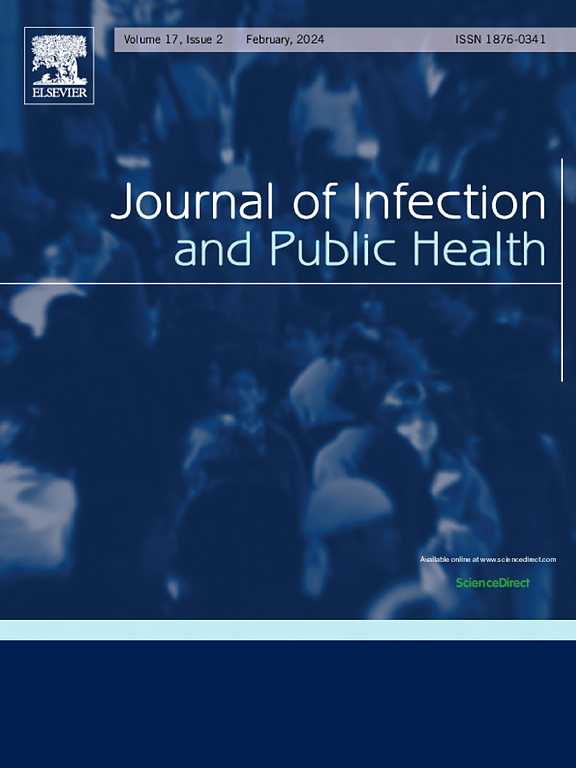Age, period and cohort processes in chronic obstructive pulmonary disease related emergency department visit rate in Taiwan, 2001–2015
IF 4.7
3区 医学
Q1 INFECTIOUS DISEASES
引用次数: 0
Abstract
Purpose
Emergency room (ER) physicians must deal with patients with clinically suspected symptoms, such as dyspnea, cough, and increased sputum production, on the frontlines of medical care if patients present with severe chronic obstructive pulmonary disease (COPD). This study aims to investigate the longitudinal tendencies of COPD-related ER visits.
Patients and methods
A total of 360,313 patients were included in this study. The COPD-related ER visit rates between 2001 and 2015 were categorized using the International Classification of Disease (ICD) codes (496). The effects of age, period, and cohort on COPD-related ER visit rates were determined using an age-period-cohort (APC) model.
Results
Age was associated with a high risk of COPD in the pediatric and older populations. A significant increase was observed in the period effect, from 2001 to 2015. The cohort effect tended to oscillate from 1918 to 1973, and was reversed in the latest cohort. Furthermore, the COPD-related ER visit rate increased between 2001 and 2015 in both men and women.
Conclusion
Age, period, and cohort were observed to increase COPD visit rates. The APC model can be used to determine trends in COPD-related ER visits.
求助全文
约1分钟内获得全文
求助全文
来源期刊

Journal of Infection and Public Health
PUBLIC, ENVIRONMENTAL & OCCUPATIONAL HEALTH -INFECTIOUS DISEASES
CiteScore
13.10
自引率
1.50%
发文量
203
审稿时长
96 days
期刊介绍:
The Journal of Infection and Public Health, first official journal of the Saudi Arabian Ministry of National Guard Health Affairs, King Saud Bin Abdulaziz University for Health Sciences and the Saudi Association for Public Health, aims to be the foremost scientific, peer-reviewed journal encompassing infection prevention and control, microbiology, infectious diseases, public health and the application of healthcare epidemiology to the evaluation of health outcomes. The point of view of the journal is that infection and public health are closely intertwined and that advances in one area will have positive consequences on the other.
The journal will be useful to all health professionals who are partners in the management of patients with communicable diseases, keeping them up to date. The journal is proud to have an international and diverse editorial board that will assist and facilitate the publication of articles that reflect a global view on infection control and public health, as well as emphasizing our focus on supporting the needs of public health practitioners.
It is our aim to improve healthcare by reducing risk of infection and related adverse outcomes by critical review, selection, and dissemination of new and relevant information in the field of infection control, public health and infectious diseases in all healthcare settings and the community.
 求助内容:
求助内容: 应助结果提醒方式:
应助结果提醒方式:


